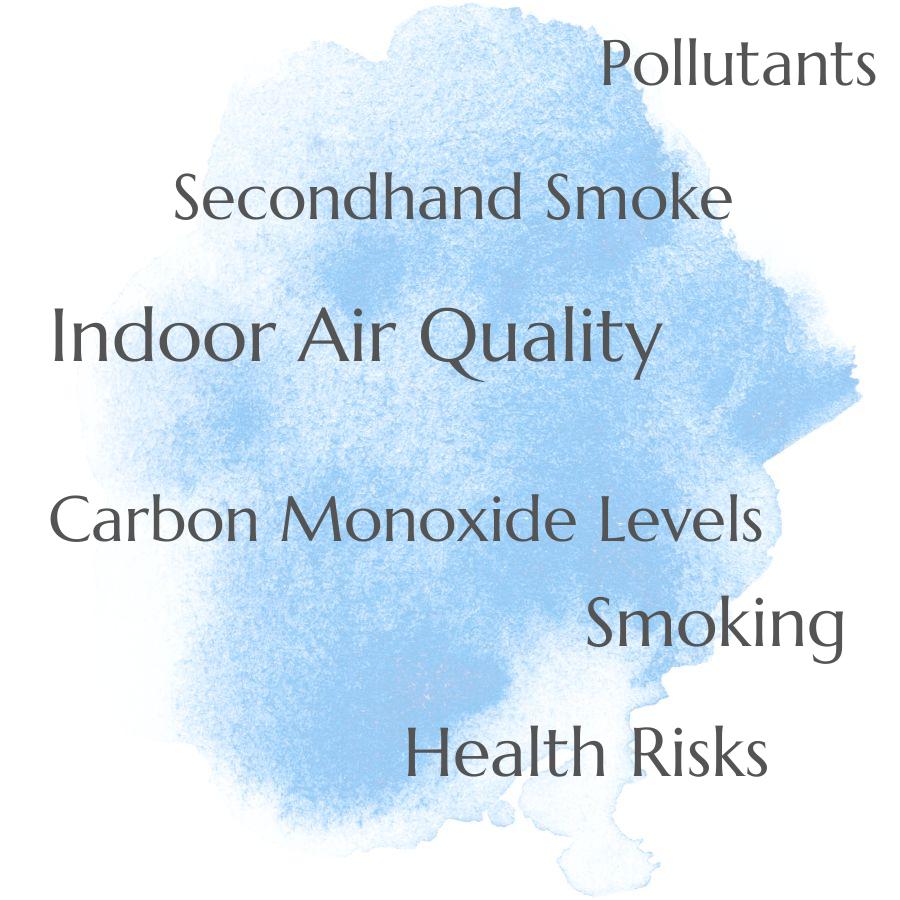Smoking has a negative effect on indoor air quality, as it releases harmful pollutants such as carbon monoxide, formaldehyde, and other toxins into the air. These pollutants can cause health problems for those exposed to them, including asthma attacks and respiratory illnesses.
Smoking is a major source of indoor air pollution and can have a significant impact on the quality of the air we breathe inside our homes. From second-hand smoke to toxic chemicals released by cigarettes, smoking can cause a variety of health problems for those living in an environment with poor indoor air quality.
In this blog post, we’ll discuss how smoking affects indoor air quality and what steps you can take to improve it.
Health Risks

These chemicals can cause serious health risks to those who are exposed to them, both directly and indirectly. Direct exposure occurs when someone is in the same room as a smoker, while indirect exposure happens when someone breathes in secondhand smoke from another room or area.
The most common health risks associated with smoking indoors include respiratory illnesses such as asthma and bronchitis, heart disease, cancer, and even premature death. The toxins found in cigarette smoke can also irritate the eyes, nose, throat and lungs of non-smokers who are exposed to it.
In addition to these physical effects on people’s bodies, smoking indoors can also lead to an increased risk of fire due to careless disposal of cigarettes or other smoking materials. Overall, smoking has a significant negative impact on indoor air quality that should not be taken lightly.
It is important for smokers and non-smokers alike to understand the potential dangers posed by secondhand smoke so that they can take steps towards protecting their own health as well as that of others around them.
Secondhand Smoke
It contains more than 7,000 chemicals, including hundreds of toxic substances and at least 70 known cancer-causing agents. When someone smokes indoors, these toxins can linger in the air for hours after the smoker has left.
This means that even if you don’t smoke yourself, you can still be exposed to secondhand smoke when you’re inside an enclosed space with a smoker present. The effects of secondhand smoke on indoor air quality can be serious.
Studies have shown that it increases levels of particulate matter (PM) in the air which can cause respiratory problems such as asthma attacks and bronchitis. It also increases levels of carbon monoxide which reduces oxygen levels in the blood and causes headaches and dizziness.
In addition to this, secondhand smoke has been linked to increased risk of heart disease and stroke due to its ability to damage blood vessels over time. In conclusion, smoking affects indoor air quality by introducing dangerous toxins into the environment through secondhand smoke which can lead to serious health issues for those exposed to it over time.
Pollutants
When a person smokes, they release chemicals and particles into the air that can be harmful to those who breathe them in. These pollutants include carbon monoxide, nitrogen oxides, formaldehyde, benzene and other volatile organic compounds (VOCs).
Carbon monoxide is an odorless gas that can cause headaches, dizziness and nausea when inhaled in large amounts. Nitrogen oxides are also released from cigarettes and can irritate the eyes, nose and throat of those exposed to it.
Formaldehyde is a carcinogen that has been linked to cancer when inhaled over long periods of time. Benzene is another chemical found in cigarette smoke which has been linked to leukemia when breathed in for extended periods of time.
VOCs are a group of chemicals with varying levels of toxicity which have been associated with respiratory problems such as asthma attacks or bronchitis if inhaled regularly over long periods of time. Smoking indoors not only affects the people inside but also those outside as well since these pollutants can travel through ventilation systems or open windows/doors into other areas where people may be exposed to them without even knowing it.
It’s important for smokers to take steps towards reducing their impact on indoor air quality by smoking outdoors or using proper ventilation systems while smoking indoors so that others don’t have to suffer from second-hand smoke exposure or its associated health risks.
Carbon Monoxide Levels
Carbon monoxide is a colorless, odorless gas that can be deadly in high concentrations. When someone smokes indoors, the CO from the smoke accumulates in the air and can reach dangerous levels.
This is especially true if there are no windows or other ventilation sources to allow fresh air to enter and dilute the concentration of CO. Long-term exposure to high levels of CO can cause serious health problems such as headaches, dizziness, nausea, confusion, and even death.
It is important for people who smoke indoors to ensure that their home has adequate ventilation so that they do not expose themselves or others to dangerous levels of carbon monoxide.
Odor
The smoke from cigarettes, cigars, and other tobacco products contains thousands of chemicals that are released into the air when smoked. These chemicals mix with the oxygen in the room to create a strong smell that can linger for hours or even days after smoking has taken place.
This odor is not only unpleasant but can also be hazardous to those who breathe it in as many of these chemicals are known carcinogens. Secondhand smoke can cause irritation to eyes and throats and may worsen existing respiratory conditions such as asthma or allergies.
Respiratory Irritation
When someone smokes indoors, the smoke particles and chemicals in the smoke are released into the air. These particles and chemicals can irritate the eyes, nose, throat, and lungs of people who breathe them in.
This irritation can cause coughing, wheezing, shortness of breath, chest tightness or pain, sore throat and other symptoms that make it difficult to breathe comfortably. In addition to these immediate effects on breathing comfort, long-term exposure to secondhand smoke has been linked to an increased risk of developing asthma or other chronic lung diseases.